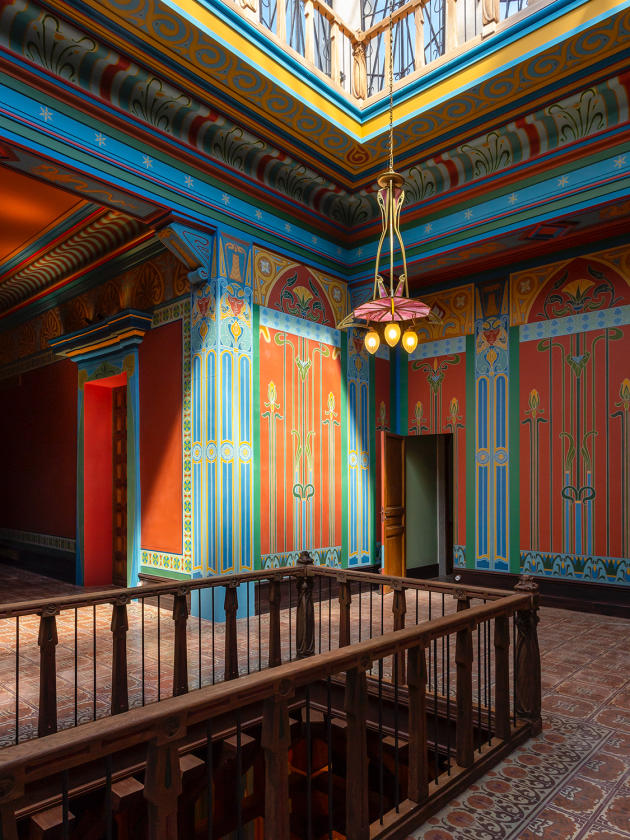Like a watchtower dominating the Hérault and the Canal du Midi, which flow at its feet, the Château Laurens is an architectural oddity, between the Egyptian temple and the modernist palace, which faces the town of Agde. An extraordinary gem where the reinforced concrete terraces (this site was one of the first in civil architecture to use this material) interact with onyx columns from ancient Algerian quarries.
Absolutely unknown, this palace has just opened its doors to the public, on June 23, after thirty years of abandonment which have seriously degraded it, then 15 million euros of work undertaken over a period of sixteen years, which make it the largest heritage project in the Occitanie region. An exemplary restoration which began with stabilization work and the recreation of a slab (a load-bearing slab) by injection of resin, the repair of the cornices and the removal of slabs by helicopter.
A complex complex to restore, “because we know more about a Romanesque building than about this unclassifiable and composite building that is the Château Laurens, whose roof terraces are inspired by Mediterranean architecture”, explains Laurent Félix, heritage manager for the Hérault Méditerranée conurbation. The tone is set from the front steps, or more exactly the pronaos, in ancient Greek (the space dressed in columns located in front of the entrance to a temple), where a local lava stone base, limestone stone, gray marble columns and an ornamented facade painted with yellow motifs come straight out of a Egyptian tomb.
A cultured and whimsical heir
It was between 1898 and 1901 that Emmanuel Laurens erected his castle on a huge wooded agricultural land, facing Agde, then a village of fishermen and winegrowers located a few kilometers from the Mediterranean coast. A year earlier, in 1897, the young man, then a medical student, inherited this agricultural estate in Belle-Isle with an area of 12 hectares and 20 million gold francs. A considerable fortune thanks to which he embarks on a long journey between Russia, Uzbekistan and Austria, from where this furiously Baudelairean dandy brings back a multitude of pieces of art and crafts, but also a certain idea of art. to live.
It is the great era of Egyptomania and Orientalism, carried by personalities like the writer Pierre Loti, the painter Eugène Delacroix, but also the peak of Art Nouveau, in France and in nearby Catalonia, and its exuberant biomorphic scrolls. “We also rediscover Antiquity during this period with a fresh eye thanks to the excavations of Knossos or Minos, in Greece, which show for the first time remains entirely painted and polychrome whereas we previously imagined this period in black and white” , exhibits Laurent Félix.
You have 60.44% of this article left to read. The following is for subscribers only.
